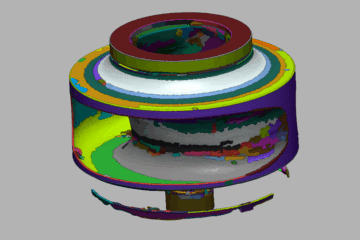Rapid prototyping technologies are frequently used in the casting industry to create prototypes and patterns for casting processes. These technologies help reduce lead times, enhance design flexibility, and allow for the quick iteration of designs before committing to the production of final castings. Here are some common rapid prototyping methods used in conjunction with casting processes:
1. 3D Printing/Additive Manufacturing:
– Method: 3D printing, or additive manufacturing, builds three-dimensional objects layer by layer from digital models.
– Application: 3D printing is used to create intricate patterns directly from digital design files. These patterns can be used for investment casting, sand casting, or other casting processes.
2. Stereolithography (SLA):
– Method: SLA is a form of 3D printing that uses a liquid photopolymer resin cured by ultraviolet (UV) light to build up layers.
– Application: SLA is commonly used to create high-resolution patterns for investment casting. The finished patterns are used to create molds for casting metal parts.
3. Selective Laser Sintering (SLS):
– Method: SLS involves selectively sintering or fusing powdered materials, such as plastic or metal powders, layer by layer.
– Application: SLS can be employed to create patterns for sand casting or for producing sacrificial cores used in investment casting.
4. Binder Jetting:
– Method: Binder jetting involves selectively depositing a liquid binding agent onto a powder bed to build up a part layer by layer.
– Application: Binder jetting is used for creating sand molds and cores for casting processes. The printed molds are then used for producing metal castings.
5. Digital Light Processing (DLP):
– Method: DLP is a 3D printing technique that uses a digital light projector to cure layers of photosensitive resin.
– Application: DLP is suitable for creating high-detail patterns for investment casting.
6. Fused Deposition Modeling (FDM):
– Method: FDM builds objects layer by layer by extruding melted thermoplastic materials.
– Application: While FDM is not commonly used for creating casting patterns due to its lower resolution, it can be employed for producing larger, less intricate patterns for sand casting.
7. CNC Machined Patterns:
– Method: Computer Numerical Control (CNC) machining is a subtractive manufacturing method that involves removing material from a solid block.
– Application: CNC machining is used to create patterns directly from a block of material or to machine master patterns that are used to produce molds for casting.
Process Overview:
1. Design:
– Create a 3D digital model of the part using computer-aided design (CAD) software.
2. Select Rapid Prototyping Method:
– Choose the appropriate rapid prototyping method based on factors such as material requirements, resolution, and cost.
3. Build Prototypes or Patterns:
– Use the selected rapid prototyping method to build physical prototypes or patterns layer by layer.
4. Pattern Preparation:
– Finish, cure, or post-process the printed patterns as needed for the specific casting process.
5. Casting:
– Use the finished patterns to create molds for casting, whether through investment casting, sand casting, or another casting method.
6. Metal Casting:
– Pour molten metal into the molds to produce metal castings.
Rapid prototyping technologies offer advantages in terms of speed, design complexity, and flexibility. By rapidly producing prototypes and patterns, designers and engineers can quickly test and refine their designs before moving into full-scale production, reducing time-to-market and minimizing costs associated with traditional tooling methods.


